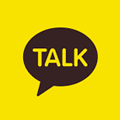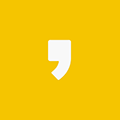What do you think about this page?
CONTACT US
2023-11-02
7 out of 10 Korean citizens have taken Korean Medicine
Writer MANAGER
Hits 260
- No file
2017 Report on the Usage and Consumption of Korean Medicine
It has been reported that 73.8% of Korean citizens have taken Korean Medicine, and that 84.2% are willing to continue taking it.
According to the 2017 Report on the Usage and Consumption of Korean Medicine, released by the Korean Ministry of Health and Welfare the National Development Institute of Korean Medicine, 73.8% of Korean citizens have taken Korean Medicine, Individuals aged 60 and above showed the highest consumption rate of 90.6%, followed by individuals in their 50’s and 40’s, who recorded 86.1% and 77.7% respectively. It was reported that individuals in their 60s demonstrated the highest consumption rate for Korean Medicine as a result of the excellent results seen for musculoskeletal diseases.
Among the major diseases requiring Korean Medicine, back pain accounted for the highest percentage at 52.7%, followed by sprains and stiff or sore shoulders. In the survey of outpatients and hospitalized patients, the major diseases requiring treatment of outpatients and hospitalized patient in Korean Medicine institutions over the past year were related to the spinal or lumbar region. Additionally, according to the survey, musculoskeletal diseases accounted for 53.5% of diseases requiring frequent prescription of herbal medicine, followed by gastrointestinal diseases and respiratory diseases, accounting for 20.3% and 18.8%, respectively.
The most frequently used traditional treatment was acupuncture(90.2%), followed by cupping therapy (53.0%), moxibustion therapy (49.1%), and traditional physical therapy (40.2%). The most frequently used medicinal herb in clinics was Korean angelica, followed by licorice.
Satisfaction with Korean Medicine was reportedly high. The overall satisfaction rate of outpatient Korean Medicine care was 86.5%, and the satisfaction rate of hospitalized care was 91.3%. Additionally, 96.4% of outpatients, and 91.8% of hospitalized patients responded that they were willing to use Korean Medicine in the future.
Furthermore, suggestions for improvement in Korean Medicine included expanded coverage of health insurance, guaranteed safety of medicinal herbs, and opportunities for consultations between Korean Medicine and Western medicine.
The 6,914 respondents to this survey on use and awareness regarding Korean Medicine consisted of 5,000 average citizens, 1,010 outpatients at Korean Medicine clinics, and 904 patients who were hospitalized at Korean Medicine facilities. The survey included 2,800 Korean Medicine institutes (hospitals and clinics) and institutes for the manufacture and sale of herbal medicine (pharmacies and herbal medicine clinics with herbal pharmacists),
where statistics on prescription, preparation, and sales of herbal medicine were also collected. The survey has been approved by Statistics Korea a reliable source of information for citizens and provides foundational source data for the establishment of policies for Korean Medicine. It was conducted from September to December, 2017.
The Korean Ministry of Health and Welfare will use the results of this survey as foundational source data for various policies, such as pilot collaborations between Korean Medicine and Western medicine, as well as projects to establish public infrastructure for Korean Medicine.
#KoreanMedicine #KoreanMedicineDoctor #KoreanMedicinePromotionGroup #TraditionalKoreanMedicine #TraditionalMedicine #HerbalMedicines #HANUI #Acupuncture #Cupping #Moxibustion #Donguibogam #NIKOM #KM




